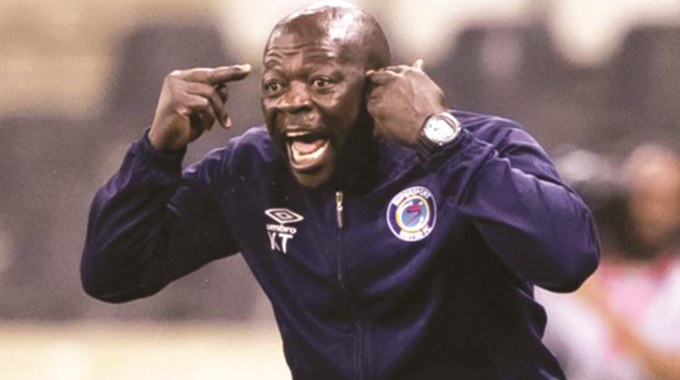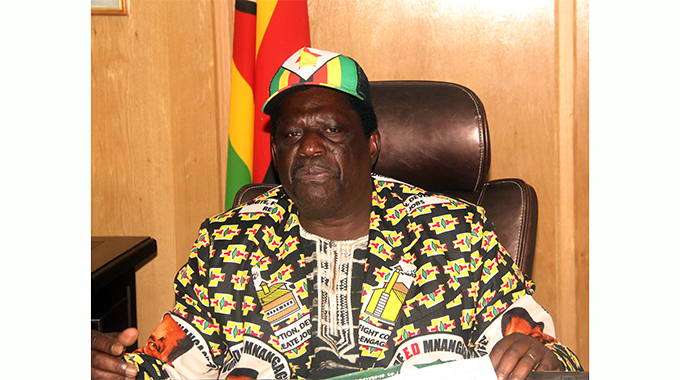Mashonaland Central: Embodiment of the revolution

Engineer Ryan Dokwani Correspondent
Opposition political movements’ participation in Mashonaland Central has proven futile since time immemorial.
In last week’s harmonised elections, the Nelson Chamisa led CCC was embarrassingly defeated by ZANU PF, cementing the assertion that the province is a stronghold of the revolutionary party.
The peaceful harmonised elections held successfully on August 23 and 24, have generated a lot of interesting debates in the media, and among political activists and analysts.
Of particular interest was the retention of all the 18 constituencies by Zanu PF in Mashonaland Central Province.
President Mnangagwa received 372 451 compared to Mr Chamisa’s 94 268.
In 2018, Mr Chamisa got 97 097 votes while President Mnangagwa garnered 366 785 votes. Mashonaland Central is widely called the home of the revolution, following its exploits in the fight against the racist white colonial administration led by Ian Douglas Smith.
The outcome of last week’s elections demonstrates how the Second Republic is determined to revitalise the economy.
ZANU PF also retained most of the seats mainly in rural areas, and to its credit, won the Bindura North Constituency which has large parts of an urban setting.
The ruling party was represented by Cde Kenneth Musanhi, who defeated the CCC’s Mr Zvidzai Kajokoto.
The biggest victory against the opposition was attained in Shamva South Constituency where the ruling party’s firebrand candidate, Cde Joseph Mapiki, garnered 31 068 against Mr Patrick Tendai Mugwambi of CCC who got a measly 3 106 votes.
Shamva North also has a big victory after Cde Isaac Chinodakufa received 26 320 against 3 298 votes for Ms Mavis Muringisanwa of CCC.
History repeats itself
The trend has been sustained in the province, in terms of electoral performance by the ruling party, such that defeat for opposition parties does not surprise them anymore.
For instance, ZANU PF’s candidate in Mazowe West Constituency, who is the party’s provincial chairperson, Cde Kazembe Kazembe, received 25 771 votes against Mr Elijah Mataranyika of CCC, who got 5 295.
The huge margins are a true testament that ZANU PF is still intact heart, soul and spirit.
The poor performance by the opposition in Shamva District clearly indicates that the people of Mashonaland Central still live with the scars and grief from the colonial period.
The struggles for freedom and independence faced by the people of Mashonaland Central remains an immediate reminder of rejecting all-Western backed political philosophies like those represented by Mr Chamisa and his CCC.
Even from the days of the “MDC”, I mean the undivided MDC of 1999 to 2004, the opposition completely failed to break ZANU PF’s fortress in Mashonaland Central Province.
It was only in 2008 that the opposition picked up a couple of council seats in Bindura and Mvurwi, otherwise the opposition has found it difficult to sell their ideology to the indigenous people.
ZANU PF clearly understands the historic, political, economic, cultural and social terrain of this province. Profiling of these wards, constituencies, provinces and subsequent planning is what ZANU PF mustered.
What makes Mash Central unique?
I am convinced that personalities and names count in politics. Heavyweight names in a political party have a direct bearing on an election outcome and the political embodiment of the people.
Prominent ZANU PF figures from Mashonaland Central have continued to “influence” political thinking, patterns and in turn, election outcomes. Interestingly, some of them are doing so even after their proverbial sleep, death.
Their mystical shadow and history continue to guide the people of Mashonaland Central. A mere mention of their names automatically informs the voter of where to put his or her vote on election day.
The list of such dead and living heroes is long. First and foremost, we have the spirit of Charwe, Mbuya Nehanda, who is the embodiment of the struggle in the history of Zimbabwe and particularly from Mazowe District.
There is also the late Cde Elliot Manyika, the late Cde Border Gezi, who sowed the unpluckable spirit of the revolutionary party in the province. There is also the late Vice President Cde Joseph Msika who hailed from Chiweshe, and the late Cde Christopher Kuruneri, forming the old guard of the revolutionary party.
We also have the First Lady, Dr Auxilia Mnangagwa of Chiweshe, veterans like Cde Nicholas Goche, Dr Lazarus Dokora, Advocate Martin Dinha, Cde Kenneth Musanhi, Cde Monica Mavhunga, Cde Chen Chimutengwende, Advocate Fortune Chasi, Major Cairo Mhandu, Cde James Makamba, Cde Edward Raradza, Cde Kazembe Kazembe and other new and emerging names in the politics of the province.
There are others such as Cde Tafadzwa Musarara, Cde Zhemu Soda and Cde Tendai Nyabani, among others.
Studies have confirmed that voters tend to want to protect the political positions of their national leaders. Thus, they will always listen to the political advice from those who come from their local communities, but holding national political positions.
The land issue
Mashonaland Central saw a number of families benefiting from land during the Land Reform Programme. This remains a tool for winning elections in the province as many people enjoy the gains of the liberation struggle.
It is always not good that some of the key opposition parties always emphasise that the Land Reform Programme is a reversible process.
We heard this from Mr Chamisa in Murehwa when he told supporters that if he won the elections, all white former commercial farmers would return.
Such messages only embolden the resolve of the people of Mashonaland Central to want to continue working with ZANU PF.
Second Republic economic exploits
The efforts by the Second Republic under President Mnangagwa have had far-reaching effects on the voting patterns in the province.
The new policies brought by the Second Republic touch the key issues that affect the people.
The introduction of devolution funds and rural industrialisation, have bridged the gap between the Government and its people.
A lot of life-changing projects have been done in the province, and they include the re-opening of Shamva Gold Mine, Eureka Gold Mine in Guruve, completion of Bindura-Shamva road, construction of Semwa and Dande dams in Rushinga and Mt Darwin, exploration of oil and gas in Mbire and Muzarabani, just to mention a few, have endeared the ruling arty to the people.
A gruelling history under colonialism
ZANU PF honours the history of the liberation struggle, something the opposition foolishly ignores. The people of Mashonaland Central are known to be the “main victims” of the liberation war.
People remember the bloody battles, in particular, the Centenary Altena Farm, where the first shot was fired.
There was also the Tsitu Hills battle in Shamva, Mt Darwin and Guruve battles, which left many people dead and injured.
Such history cannot be neutralised or erased by Western sponsored opposition parties.
The Chibondo (Mt Darwin) exhumation and “reburials” of the people killed during the liberation war, also take ZANU PF closer to the people of Mashonaland Central.
The exhumations and reburials took place around 2011, led by the Fallen Heroes Trust. About 849 bodies were exhumed in Mt Darwin and this touched many souls in the province. The exercise was so emotional for community members.
Philanthropic works by the First Lady
The Nhanga/Gota/ Ixhiba programme by First Lady Dr Auxilia Mnangagwa has had a direct impact on the lives of the people of Mashonaland Central.
These engagements have benefited people in the provinces.
The traditional cook competitions, and self-help projects such as the production of liquid soap, and the like, have transformed the lives of many people in the province.
The youth vote
Traditionally, youths were not fully participating in the elections in the past, but this time, there was a huge turnout from youths in the province. It is indisputable that the youth vote contributed significantly in the just ended harmonised elections. We saw a lot of activities from the Youth League, in particular, in Shamva District where more than 30 000 youths took part in the just-ended general elections. The interest from youths in Shamva to participate in politics was stimulated by President Mnangagwa’s support for them.
Voter mobilisation and internal restructuring
Internal processes help mobilise and motivate party structures even for external elections. The ZANU PF machinery is effective and very efficient when it comes to mobilisation, coordination and activation of party structures. By the way, the party is known for its massive audit and verification exercises for its structures.
ZANU PF is disciplined when it comes to ensuring that after internal elective processes, all supporters are galvanised to face the opposition.
Engineer Ryan Dokwani is a political analyst based in Mashonaland Central








Comments